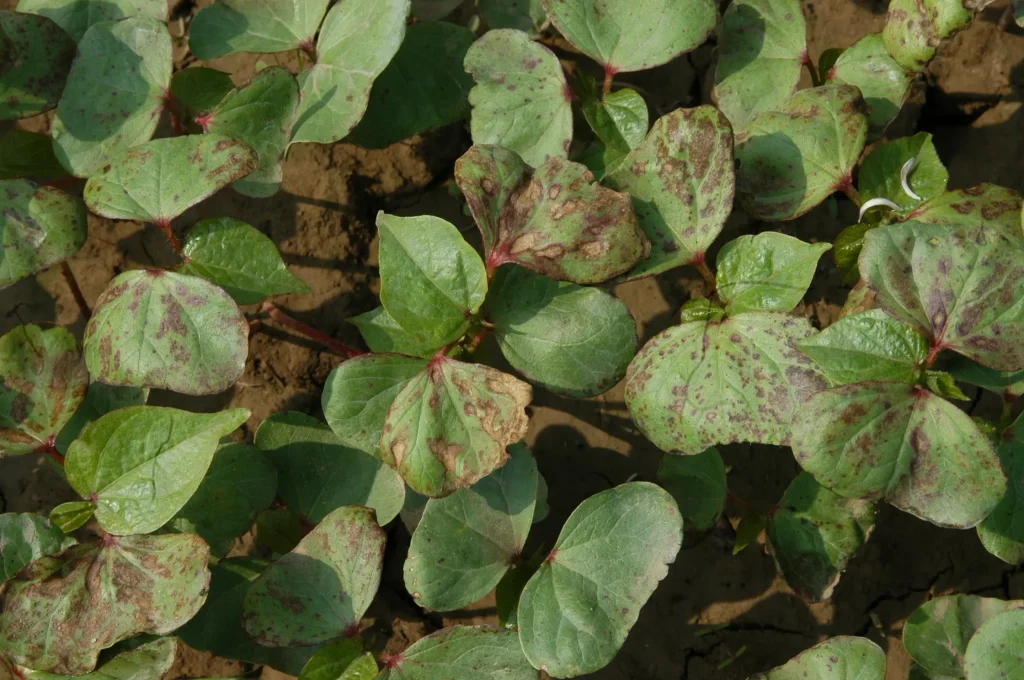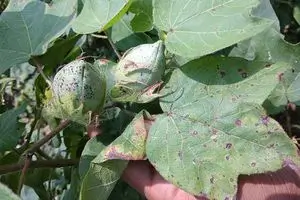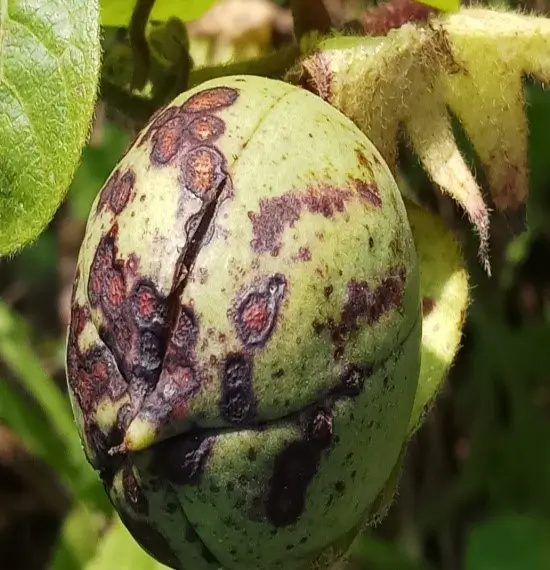Cotton plants are majorly prone to pests like bollworms and along with these you can also observe small reddish spots on the cotton plants, which is caused by anthracnose disease in cotton caused by the fungus Colletotrichum gossypii. So how does this disease occur? What are the other symptoms of anthracnose in cotton? How can we manage anthracnose in cotton?
Recognising the Symptoms Caused by Anthracnose
Early detection is very important for controlling anthracnose as the symptoms can be seen from seedling stage until the plant matures. The symptoms can vary depending on the stage of the plant’s growth:
On Seedlings:

- You can observe small, reddish circular spots appear on cotyledons (the first leaves that appear from a seed) and primary leaves.
- If proper care is not taken, seedlings may wilt and die due to the infection.
On Mature Plants:

- The fungus can attack the stem, causing it to split and the bark to shred. “Boll spotting” is the most common symptom of anthracnose in cotton in which small, water-soaked, circular, reddish-brown spots appear on the bolls.
- If not taken care of, the lint inside the bolls can become stained yellow or brown and turn brittle.
- Bolls infected with anthracnose disease stop growing, burst prematurely and dry up.

Understanding the Pathogen
The anthracnose fungus forms many small structures called acervuli on infected plant parts. These acervuli produce spores on structures called conidiophores. The spores are clear and sickle-shaped. Additionally, the fungus produces black, thick-walled hairs called setae.
Conditions Favouring Infection
Anthracnose can survive under certain conditions, including:
Prolonged Rainfall: Continuous rain acts as a favourable condition for fungus to thrive especially during the boll formation stage.
Close Planting: Decrease row spacing or plant to plant spacing creates a humid environment conducive to fungal growth.
Weed Hosts: The fungus can survive on weeds like Aristolachia bractiata and Hibiscus diversifolius.
Disease Cycle
The fungus can survive in several ways:
Dormant Mycelium in Seeds: It can remain in the seed or as spores on the seed surface for about a year.
Plant Debris: The fungus can live in rotten bolls and other plant debris in the soil.
Airborne Spread: The spores can be spread by wind.
How to Manage Anthracnose in Cotton
Keeping the field free of anthracnose and the spores causing it is important as they can directly affect the quality of cotton fibre and decrease yield.
Seed Treatment:
Treat delinted seeds with fungicides such as Carbendazim, Carboxin, Thiram, or Captan at a rate of 2 grams per kilogram of seed. This helps prevent the initial infection.
Field Sanitation:
Remove and burn infected plant debris and bolls to reduce the fungal load in the soil.
Remove weed hosts from around the field to eliminate alternative hosts for the fungus.
Fungicide Application:
Spray the crop during the boll formation stage with fungicides such as Mancozeb (2 kg/ha), Copper oxychloride (2.5 kg/ha) or Carbendazim (500 g/ha).
Biological Management:
You can apply Pseudomonas fluorescens at 5 ml per liter of water.
Crop Rotation:
Rotate crops with non-host plants like maize or wheat to break the disease cycle. This prevents the fungus from surviving year after year in the same field.
Plant Resistant Varieties:
Use cotton varieties that are resistant to anthracnose. This can reduce the need for fungicides and help manage the disease more effectively.
Proper Irrigation:
Avoid over-irrigation, especially during heavy rains. Use irrigation systems that deliver water to the base of the plants rather than overhead watering. This helps reduce humidity, which is favorable for the fungus.
Additional Tips to Keep Cotton Fields Anthracnose Free
Timing of Fungicide Application:
Apply fungicides at the correct stage of growth and at the recommended concentrations. The timing is essential; fungicides should be applied when the first symptoms of the disease are observed.
Sanitation:
Practice good sanitation by removing and destroying any infected plant debris around the field. Clean and disinfect equipment regularly to prevent the spread of the disease from one field to another.
Monitoring:
Regularly monitor your fields for symptoms of anthracnose. Early detection allows for timely intervention and can help to reduce the impact of the disease.
Anthracnose is a serious threat to cotton crops, but with careful management, its impact can be minimised. Stay vigilant and implement these strategies to protect your cotton fields from anthracnose.